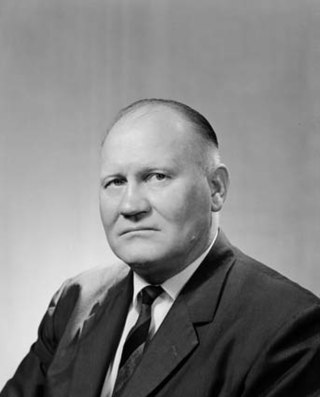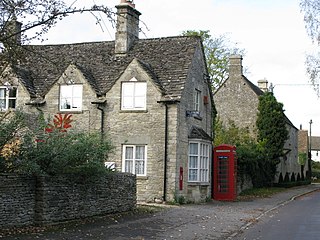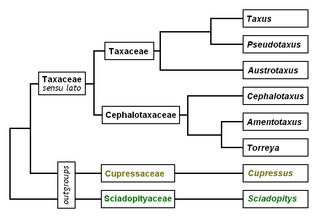See also
- Maisey-le-Duc, France, a commune
- Maisie (disambiguation)
Maisey is a surname and given name which may refer to:

The Psychedelic Furs are a post-punk band founded in London in February 1977. Led by lead vocalist Richard Butler and his brother Tim Butler on bass guitar, the Psychedelic Furs are one of the many acts spawned from the British post-punk scene. Their music went through several phases, from an initially austere art rock sound, to later touching on new wave and hard rock.
Marston may refer to:

The Romualdo Formation is a geologic Konservat-Lagerstätte in northeastern Brazil's Araripe Basin where the states of Pernambuco, Piauí and Ceará come together. The geological formation, previously designated as the Romualdo Member of the Santana Formation, named after the village of Santana do Cariri, lies at the base of the Araripe Plateau. It was discovered by Johann Baptist von Spix in 1819. The strata were deposited during the Aptian stage of the Early Cretaceous in a lacustrine rift basin with shallow marine incursions of the proto-Atlantic. At that time, the South Atlantic was opening up in a long narrow shallow sea.

The Royal Institute of Painters in Water Colours (RI), initially called the New Society of Painters in Water Colours, is one of the societies in the Federation of British Artists, based in the Mall Galleries in London.

Daniel is a masculine given name and a surname of Hebrew origin. It means "God is my judge", and derives from two early biblical figures, primary among them Daniel from the Book of Daniel. It is a common given name for males, and is also used as a surname. It is also the basis for various derived given names and surnames.

The relics of Sariputta and Moggallana refers to the cremated remains of the Buddhist disciples Sariputta and Moggallana. Sariputta and Moggallana were the two chief disciples of the Buddha, often stylized as the right hand and left hand disciples of the Buddha respectively. The two disciples were childhood friends who ordained under the Buddha together and are said to have become enlightened as arahants. The Buddha declared them his two chief disciples, after which they assumed leadership roles in the Buddha's ministry. Both of the chief disciples died a few months before the Buddha near the ancient Indian city of Rājagaha in what is now Bihar, and were cremated. According to Buddhist texts, the cremated remains of the disciples were then enshrined in stupas at notable monasteries of the time, with Sariputta's remains being enshrined at Jetavana monastery and Moggallana's remains being enshrined at Veḷuvana monastery. However, as of 1999 no modern archaeological reports have confirmed this, although in 1851 discoveries were made at other sites.

Symmoriiformes is an extinct order of holocephalians. Originally named Symmoriida by Zangerl (1981), it has subsequently been known by several other names. Lund (1986) synonymized the group with Cladodontida, while Maisey (2008) corrected the name to Symmoriiformes in order to prevent it from being mistaken for a family. The symmoriiform fossils record begins during the late Devonian. Most of them died out at the start of the Permian, but Dwykaselachus is known from the Artinskian-Kungurian of South Africa. Teeth described from the Valanginian of France and Austria indicate that members of the family Falcatidae might have survived until the Early Cretaceous; however, these teeth were also argued to be more likely neoselachian teeth.

Axelrodichthys is an extinct genus of mawsoniid coelacanth from the Cretaceous of Africa, North and South America, and Europe. Several species are known, the remains of which were discovered in the Lower Cretaceous (Aptian-Albian) of Brazil, North Africa, and possibly Mexico, as well as in the Upper Cretaceous of Morocco (Cenomanian), Madagascar and France. The Axelrodichthys of the Lower Cretaceous frequented both brackish and coastal marine waters while the most recent species lived exclusively in fresh waters. The French specimens are the last known fresh water coelacanths. Most of the species of this genus reached 1 metre to 2 metres in length. Axelrodichthys was named in 1986 by John G. Maisey in honor of the American ichthyologist Herbert R. Axelrod.

Donald William Maisey was an Australian politician.

Hybodontiformes, commonly called hybodonts, are an extinct group of shark-like chondrichthyans, which existed from the late Devonian to the Late Cretaceous. They form the group of Elasmobranchii closest to neoselachians, the clade of modern sharks and rays. Hybodonts were named and are distinguished based on their conical tooth shape. They are also noted for the presence of a spine on each of their two dorsal fins. They were abundant in marine and freshwater environments during the late Paleozoic and early Mesozoic, but were rare in open marine environments by the end of the Jurassic, having been largely replaced by modern sharks, though they were still common in freshwater and marginal marine habitats. They survived until the end of the Cretaceous, before going extinct.

Lissodus is an extinct genus of freshwater shark. It lived from the Early Carboniferous subperiod to the Albian age of the Cretaceous. It was about 15 centimetres (5.9 in) long and had flat teeth that it used for eating clams.

Marston Meysey, pronounced and sometimes also spelt Marston Maisey, is a village and civil parish in Wiltshire, England, lying 3 miles (5 km) northeast of Cricklade on the county boundary with Gloucestershire. The parish includes the hamlet of Marston Hill. Marston Maisey is the spelling for the civil parish, but not for the village on Ordnance Survey maps.
Maisie, also spelt Maisy or other minor variations, is a feminine given name. It is the pet form of Mairead, which is the Scottish Gaelic equivalent of Margaret. The -ie is a diminutive suffix used in Scottish as well as Northern England English.

Eotetrapodiformes is a clade of tetrapodomorphs including the four-limbed vertebrates and their closest finned relatives, two groups of stem tetrapods called tristichopterids and elpistostegalids. The clade was named in 2010 by Michael I. Coates and Matt Friedman, and is defined as "the node-based clade arising from the most recent common ancestor of Eusthenopteron and Ichthyostega plus all of its descendants". It thus excludes the basalmost tetrapodomorphs, such as the rhizodonts and megalichthyiforms.

Yew is a common name given to various species of trees.

"Aotearoa" is a song by New Zealand recording artist Stan Walker featuring Ria Hall, Troy Kingi and Maisey Rika. It was released as a single through Sony Music Australia on 21 July 2014. "Aotearoa" peaked at number two on the New Zealand Singles Chart.
Jahir a variant of Jair is a given name. It may refer to:
Tacuadactylus is a genus of ctenochasmatid pterosaur from the Late Jurassic of Uruguay.

Maisey Rika is a New Zealand singer, songwriter and composer, performing in both English and Māori. Her five original albums have each reached the Top 40 in the Official New Zealand Music Chart. She was named an Arts Foundation Laureate in 2021, has received awards at the Waiata Māori Music Awards and APRA Awards, including APRA Best Māori Songwriter in 2010 and 2013, and has twice won Best Māori Language Album at the NZ Music Awards.
Bofors 40 mm gun is a name or designation given to two models of 40 mm calibre anti-aircraft guns designed and developed by the Swedish company Bofors: